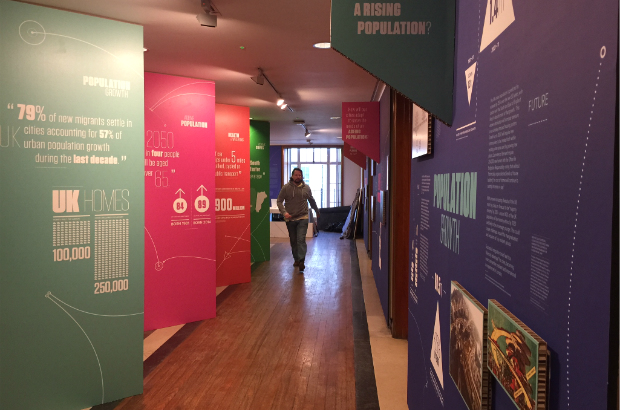In February, the Foresight Future of Cities project produced The Future City exhibition in an attempt to share some of its emerging thinking with a wider public and professional audience.
Imagining the city of the future has long been a source of fascination for architects, artists, and designers around the world. Through drawings, maps and film, urban futures have been depicted in many ways - from tranquil green utopias and great domed constructions to vast, inter-connected mega-structures and machines.
As we look ahead, the UK’s future will be shaped by its cities, so this project considers how people will live, work and interact in cities 50 years from now. We recognise that this Foresight project sits in a long, rich history of engaging with the future of cities, and in acknowledgement of this we commissioned 2 contextual reviews early on in the project examining how the future of cities has been visualised through time and identifying the ideas and concepts that underpin how people have written and thought about the future of cities.
Foresight established a partnership with the Royal Institution of British Architects (RIBA) to use part of their gallery space. The Future City exhibition drew on the academic working papers from the Foresight Future of Cities project and RIBA’s recent reports, and the exhibition sought to ask questions such as:
- What do changing technologies, demographics and lifestyles mean for our cities?
- How can emerging tools help future proof cities and their citizens?
- What might your city look like in 2065?
The exhibition identified and quantified 4 selected challenges for UK cities over the coming 50 years (population growth, an ageing population, health and economic shifts) before identifying possible future design opportunities to tackle these challenges. The content was richly illustrated throughout with imagery from A Visual History of the Future.

Designing the future city
A key message of the exhibition was that in designing our cities, urban decision-makers will have a bigger range of tools than ever before.
Whether designing for a single plot of land, creating an institution or an entire city - pen and paper has been complemented by a wide range of electronic data collection devices, geo-surveys, satellite mapping and visualisation software. These have allowed us to better understand the dynamics of human behaviour and the physical constraints of sites. Many technologies have become commonplace and can be harnessed to develop ever more complex urban landmarks, systems and spaces.
In future, innovative ‘design tools’ will help UK cities maximise the opportunities of the future. There will be no ‘one size fits all’ or quick solutions to the complexity accumulated over centuries of urban development. The exhibition proffered and showcased some emerging design tools that could respond to the next 50 years of the UK's urban developments:
- Cities Unlocked: A headset to help blind people navigate cities (by 2050, the number of people registered blind will double to 4 million)
- Wikihouse: An open source building system to innovate in the provision of housing
- A Landscape Vision for HS2: A blueprint for how one of the UK’s largest infrastructure projects can integrate and enhance the landscape
- London Data Table: A innovative means of spatializing live data, bridging the digital and the physical
These examples weren't posited as solutions, but instead sought to open the debate about how we are designing our future.
Good or bad design, in its broadest sense, will be the most significant tool to shape the future of our cities. The future city may not look that different to today on the surface but the way it is realised is likely to be very different.
Sign up for email alerts from this blog, or follow us on Twitter.

